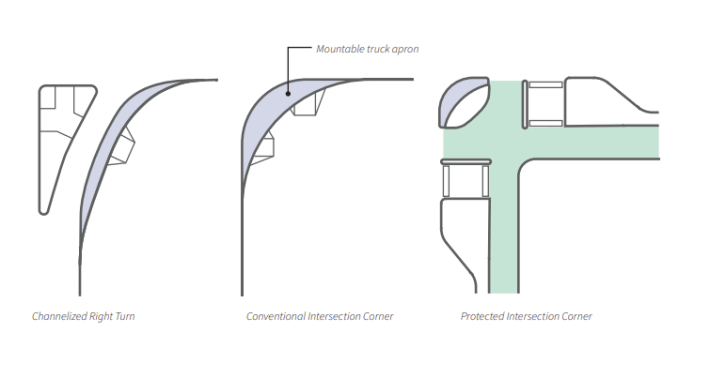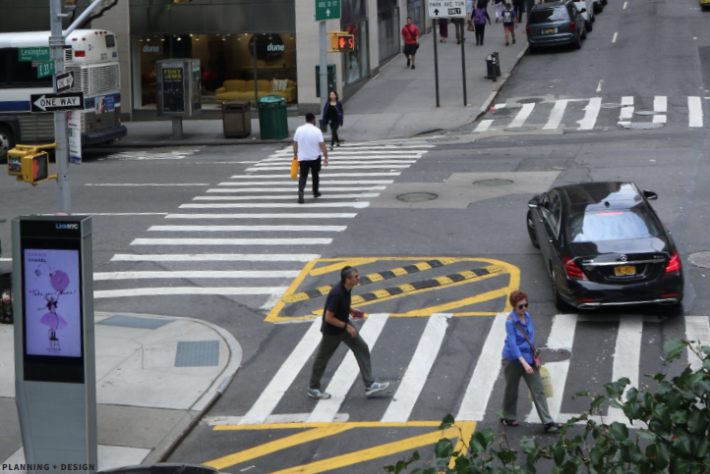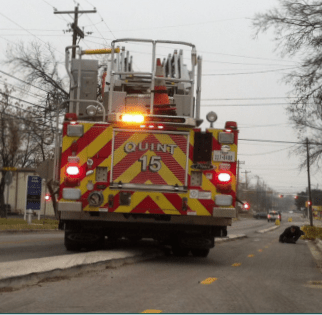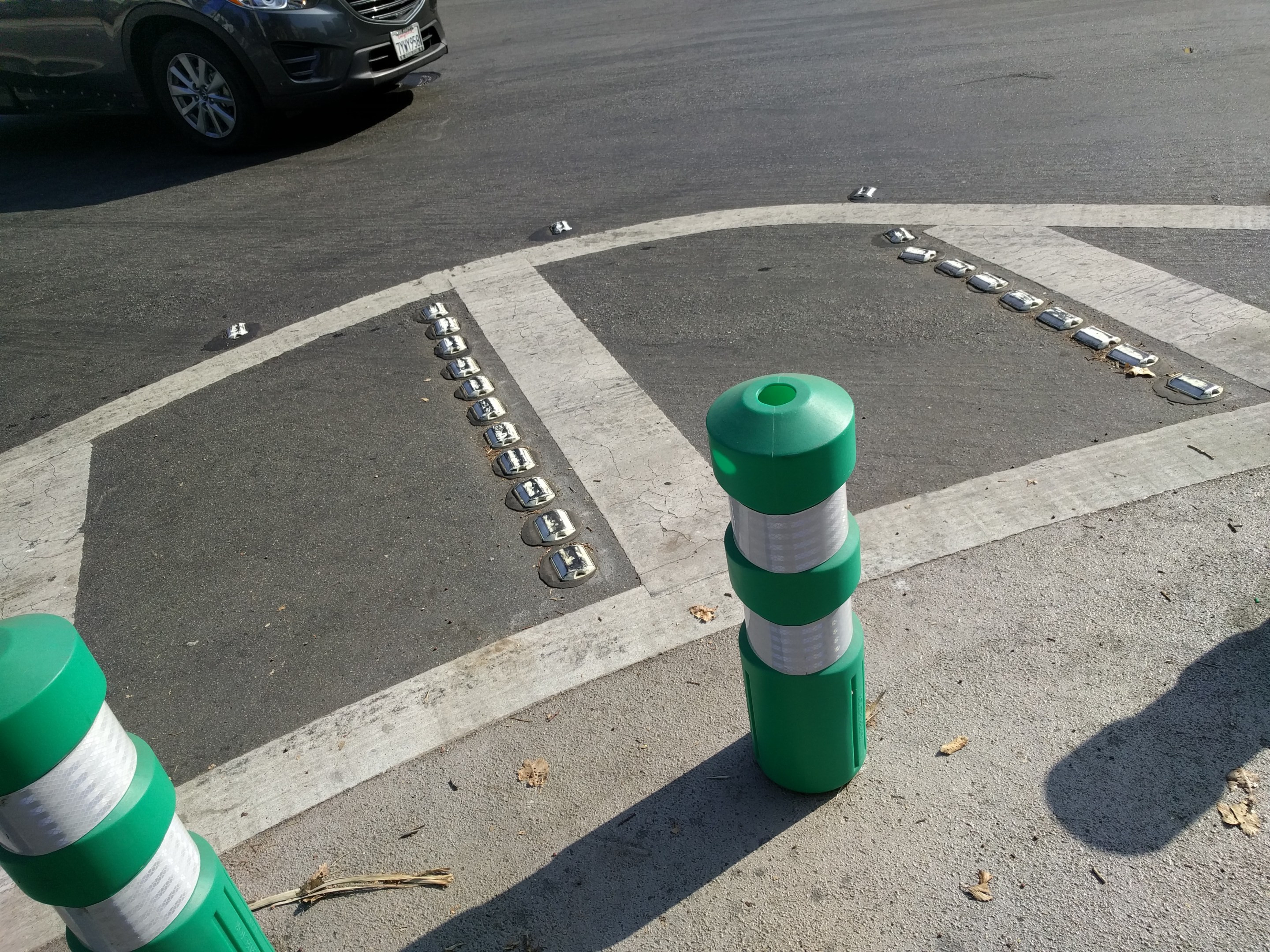Cities throughout the country and especially in the Bay Area are looking at ways to make intersections safer. "Corner Design For All Users," a new study released Thursday by Portland, Oregon-based Alta Planning and Design, looks at various corner designs in San Francisco, San Jose, Portland, New York, Ottawa, Austin, and a few other cities to figure out what works and what doesn't help reduce conflicts between motorists, cyclists, and pedestrians.
From the study:
Historically, intersections have been designed to facilitate easy turning by infrequent design vehicles. This approach has resulted in countless intersections that are much larger than they need to be; intersections where pedestrians and bicyclists confront long crossings that leave them exposed to turning vehicle traffic moving quickly along large corner radii. Balancing access for more infrequent larger vehicles with the safety needs of vulnerable roadway users is possible and cities across North America have been experimenting with designs for years. This white paper makes the case, with case study examples, for a more thoughtful approach to intersection corner design as communities place greater priority on reducing serious injuries and deaths among vulnerable road users.
During a presentation this morning to launch the study, Alta VP Joe Gilpin and designer Matt Pinder talked about how intersection corner radii were - and unfortunately still are in most cities - designed to maximize throughput rather than prioritize the safety of vulnerable road users. Corners are also often engineered based on facilitating the largest vehicles, mainly big rigs and fire trucks. Unfortunately, smoothing out a corner to make it easy on a big rig driver has the unintended consequence of promoting dangerously fast turns for cars.
But some cities, notably San Francisco and San Jose, are pioneering dual-radii corners--where an outer, much tighter curb is used to force car drivers (the vast majority of vehicles) to slow to a safe speed that gives ample time for motorists, pedestrians and cyclists to respond to potential conflicts. These tighter curbs are usually also mountable, so trucks are not prevented from traversing them, but are also forced to slow to a safer speed.
The basic concept of a dual-radius corner or turn can be applied to almost any intersection type, as seen below (although Streetsblog, for the record, hates channelized/slip turns, seen on the left):

According to the presenters, there are a few key takeaways. Treatments that slow drivers taking curves don't have to be costly. San Jose installed the reflective bumps, as seen in the lead image, to give motorists a tactile reminder to slow down. Or, in the case below in NYC, a plastic or rubber curb can do the trick:

In addition, the height of the outer radius curve can't be just paint and can't be too smooth, or motorists will simply cut across it. But, obviously, they also can't be so high that they prevent large vehicles from driving over when necessary.

Streetsblog has covered some of these installations before, which were incorporated into San Jose's quick build bike lane and protected intersection project (as seen in the lead image) and on San Francisco's protected intersection at 9th and Division.

The 48-page study does a great job of quantifying what works, what doesn't, and how they can be installed in various environments. Be sure to check it out.






